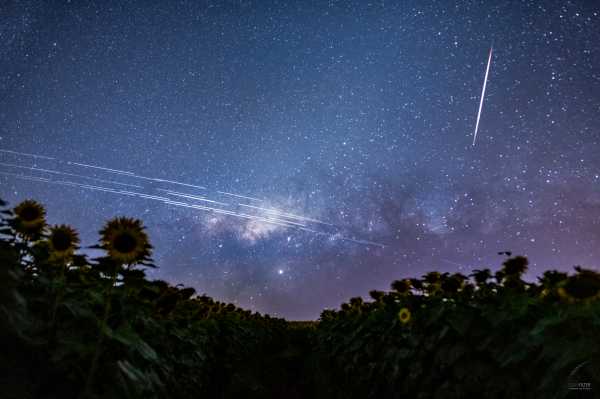
Share this story
-
Share this on Facebook
-
Share this on Twitter
-
Share
All sharing options
Share
All sharing options for:
The night sky is increasingly dystopian
-
Reddit
-
Pocket
-
Flipboard
-
Email
In the predawn hours of November 18, 2019, Northwestern University astronomer Cliff Johnson noticed a huge swarm of unfamiliar objects streaking across the sky.
That night, Johnson was surveying the Magellanic Clouds — two very dim dwarf galaxies that orbit our own Milky Way galaxy — with the telescopes at the Cerro Tololo Inter-American Observatory in Chile. These galaxies are teaching scientists how stars form, and what happens when two galaxies pass near one another. Johnson was watching them remotely, through a webcam at Fermilab outside of Chicago. “All of a sudden,” he says, “we just start seeing these streaks come across the webcam view. I’ve never seen anything like that.”
The streaks weren’t from the heavens. They were from Earth.
Over five minutes, a train of 19 satellites had crossed into the telescopes’ view, scarring the observation with bright parallel marks, and degrading their scientific value. It didn’t take Johnson and his colleagues long to figure out whose satellites they were: A week earlier, Elon Musk’s SpaceX had launched 60 small satellites into low Earth orbit. Johnson’s colleague, astronomer Clarae Martínez-Vázquez, who was also working that night, vented her frustration on Twitter.
“I am in shock,” she wrote.
This is what the telescope’s camera caught.
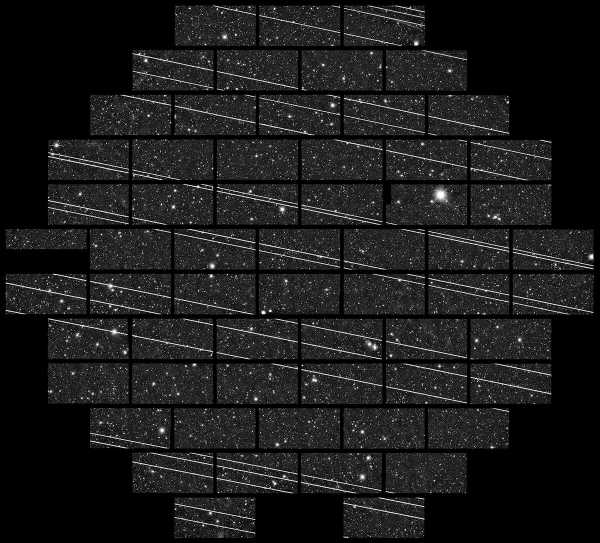
Astronomers are accustomed to satellites occasionally passing into view — one at a time. They don’t ruin observations, per se. But it does take some effort to digitally remove them from the final image.
But 19 satellites? That was unprecedented, leading to 15 to 20 percent of the image being “completely lost,” Johnson says.
What’s more, Johnson worries that the swarm was an omen — of a future where just about every telescope observation conducted at twilight is marred by satellite streaks.
Soon, Earth may be blanketed by tens of thousands of satellites, and they’ll greatly outnumber the approximately 9,000 stars that are visible to an unaided human eye.
This is not some distant threat. It’s already happening. SpaceX has already put 240 of these small satellites, collectively called Starlink, in the sky. Sixty were launched this week. That will be followed by more launches, possibly every two weeks.
In all, the company has approval from the Federal Communications Commission to launch 12,000 satellites, and Musk is seeking approval to launch 30,000 more.
SpaceX’s goal is for Starlink satellites to form into a constellation that will provide internet access, for a price, to remote areas of Earth.
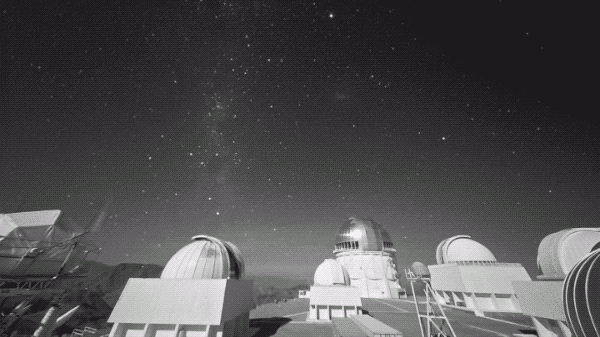

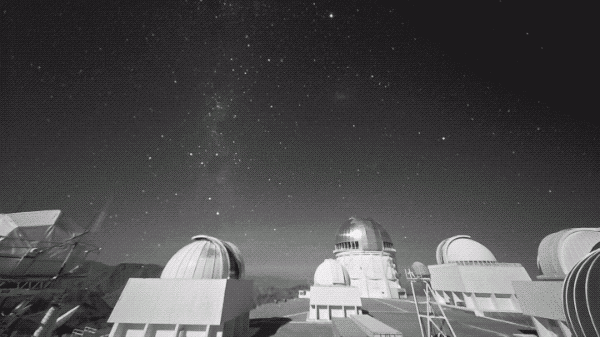
And it’s hardly the only company in this market. OneWeb, a UK-based company that also wants to beam internet access from space, is seeking to launch 650 satellites, beginning this January. Amazon wants to launch 3,200 satellites, in a constellation called Kuiper, also with the goal of selling internet access. In the near future, there could be 50,000 or more small satellites encircling the Earth, and for purposes other than delivering internet. Could some company arrange bright satellites in the sky to spell out the name of a popular soda? Maybe. There’s no global ban on space advertising.
These new satellites are small, mass-produced, and orbit very closely to the Earth to ensure the internet connection they provide is speedy. But that closeness also makes them more visible, and brighter in the night sky. “Satellites launched by SpaceX and others will be brighter than 99 percent of the population of objects of all types currently in Earth orbit,” Patrick Seitzer, an astronomer at the University of Michigan who studies orbital debris, tells me by email. He says Starlinks are brighter than other satellites orbiting at the same height. “So it has something to do with the design and attitude [i.e., orientation] of the Starlinks.”
In the long run, this could diminish our view of the universe, create more space debris, and, potentially, deprive humanity of an unblemished view of the night sky. It’s not that the 19 Starlink satellites ruined the entire night of observations, Johnson says. “The fear is that this is going to become the new normal. If we’re really talking about many thousands to tens of thousands of satellites … that is no longer a small deal.”
What’s more, some worry it may already be too late to fight back.
What the future of the night sky may look like
The deployment of so many satellites is critical to close the connectivity gap. Starlink and its competitors will be able to connect the most remote places in the world (which are also often very poor) to the internet, and therefore, the global economy. That’s revolutionary. The world will be more connected than ever before.
The systems may also prove useful during natural disasters. When a hurricane takes out communications infrastructure on the ground, rescue crews will still be able to access space-based internet.
But it comes with a cost.
Astronomers have done the calculations, and say many of these satellites will be visible to the naked eye, particularly in the time after sunset and before sunrise, when they’ll most strongly catch the glare of the sun.
When there are 50,000 satellites in the sky, “you’ll see the sky crawling,” says Tony Tyson, a University of California Davis astronomer and physicist. “Every square degree will have something crawling in it.”
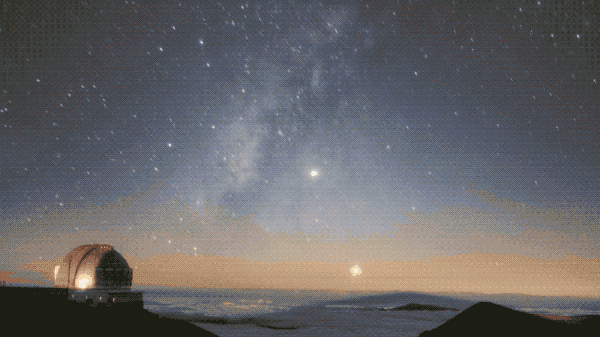

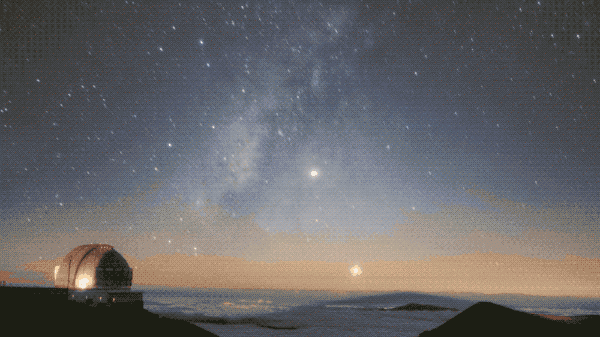
The Starlink satellites are most visible after they first launch, when they’re closer to the Earth and orbit in close proximity to one another. So what Johnson saw through his webcam view — the train of satellites passing by in quick succession — will repeat after each launch.
But over time, the satellites will climb into higher orbits, where they’ll be slightly less visible, and will spread out from one another.
When they reach their final orbits, Tyson says they’ll still be “visible by dark-adapted eyes in dark locations,” at twilight (after sunset and before sunrise). But “twilight can last most of the night,” he says, depending on your latitude and the time of the year. (Plus, there are a lot of objects in the space — particularly asteroids that are coming from the direction of the sun — that can only be seen at twilight.)
You may be familiar with the problem of light pollution. Most people living near or in urban areas can’t see many stars because city lights cast a glowing haze that obscures the view of all but the brightest of stars.
But the satellites are not creating light pollution. It’s more like sky pollution. In the darker places of Earth, these satellites will be even easier to spot. “It’s pretty dystopian to me,” Johnson says. “This is a problem that’s going to find you wherever you are.”
In the video below, astronomer Michael Vlasov has a sped-up animation of what the night sky might look like when there are 12,000 Starlink satellites in orbit. Keep in mind, this is a YouTube video, and it may not look all that impressive. But you can see how the early night sky, and predawn sky, is peppered with satellites flying across the sky.
And here’s an annotated animation from Vlasov showing where the satellites would be flying overhead.
Whether you notice them or not in the future may depend on where you live, and your access to a dark sky. “A large percentage of humans living in cities are not going to notice a large difference at all,” Tony Beasley, director of the National Radio Astronomy Observatory, says.
There are a lot of other potential concerns about so many satellites in the sky. One is space debris. When a satellite breaks down in space, it just stays up there as junk until gravity pulls it back down to Earth. Already, several Starlink satellites have stopped functioning and are just hanging out up there as debris, where they present a hazard for colliding with other objects in space.
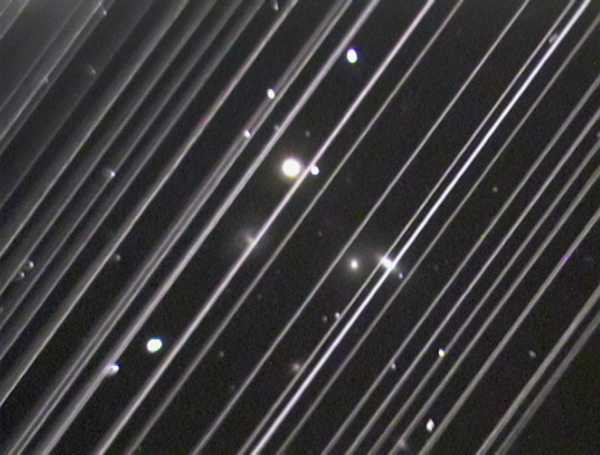
“If you’re going to put up 10,000, or 20,000 or 30,000 satellites, you automatically, instantly intentionally have hundreds of pieces of debris right off the bat,” says Christopher Johnson, space law adviser at the Secure World Foundation, a nonprofit that advocates for the sustainable and peaceful use of space. The more space debris in orbit, the harder it becomes to build and operate equipment there.
More immediately, the constellation satellites are a cause for straight-up alarm among many astronomers. In the next decade, they have been hoping to capture an even wider, deeper view of the cosmos from the Earth. And the satellites will get in the way.
Astronomers are worried they’ll lose important observations
Starlink and similar constellation satellites are different than many of the satellites in orbit in a way that makes them a nuisance to astronomy: They’re very close to Earth. If something is two times lower in orbit, Tyson explains, it’s four times brighter to us on the ground.
Telescopes capture images of the sky with very sensitive cameras. The satellites are so bright, that they overexpose the cameras’ sensors. The effect is like taking an eraser to their images of the night sky, covering their images of the sky with tracts of unusable data.
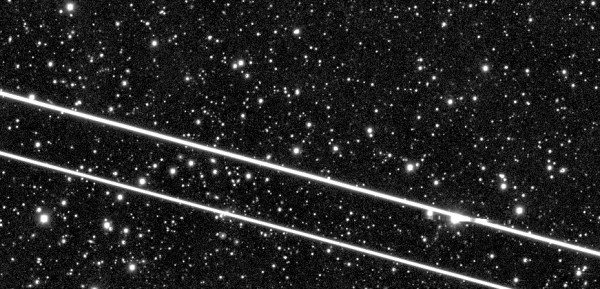
Along with his work at UC Davis, Tyson is the chief scientist at the Large Synoptic Survey Telescope, which was recently renamed the Vera Rubin Observatory. It’s an observatory under construction in Chile with a huge field of view: Its mirrors will be able to capture an area of the sky 40 times the size of the full moon, and spot objects 10 million times fainter than the human eye could see.
Starting in 2023, the $500 million observatory will embark on a 10-year survey of the entire night sky. The project is called the Legacy Survey of Space and Time (LSST), which will show the universe in motion, and capture millions of stars evolving over time.
But if there are tens of thousands of satellites in orbit, LSST’s unique view of the universe will be obscured. “There’ll be nowhere where you can take LSST and point it without having one of [the satellites] in the field of view,” Tyson told me in December. “We’re going to see a potentially revolutionary new view onto the transient universe, and instead we’re going to see a haze of streaks.”
SpaceX says it has been working with the astronomy community, and the scientists at the Vera Rubin Observatory in particular, on mitigating the problem. (“Our level of brightness and visibility was a surprise to us,” Patricia Cooper, SpaceX’s vice president of satellite government affairs, told attendees of the recent American Astronomical Society meeting in January.)
Their efforts are being recognized: “SpaceX is setting a very good precedent, I think, trying to do the right thing,” Beasley says. Tyson also believes that SpaceX is “committed to solving the problem” of interference with the Vera Rubin Observatory.
In an experiment, SpaceX deployed a dark coating for the underside of one of its satellites on its previous launch to see if it will be less visible to telescopes. But it’s not guaranteed to work. And meanwhile, the company continues to launch more unaltered bright satellites into space.
It’s not simple to just slap a coat of black paint on the satellites. Too dark, and the satellites will start to absorb excess heat, which could impact their functioning. It still unclear how dark SpaceX will ultimately go. The company is taking an iterative “trial and error” approach, as SpaceX president Gwynne Shotwell told reporters in December.
Meanwhile, astronomers don’t have some mandated right to an unobstructed view of the night sky, and don’t have a forum to voice their complaints. I asked Tyson if astronomers are powerless in protecting their view on the night sky. “We’re definitely powerless,” he says.
There are international protections for radio astronomy, but not optical
The pessimism among astronomers is due to the fact that they have no legal — national or international — protections here.
Simply put: “There are currently no regulations, rules, or guidelines of any sort dealing with the brightness of satellites,” Seitzer says. “Not at the international level, not at the national level anywhere.”
Sure, SpaceX might be willing to work with the scientific community in reducing the brightness of their satellites. But another company, in another country, may not.
To some, that’s an outrage. “The fact that one person, or one company, can take control and completely transform humans’ experience of the night sky, and not just humans, but every organism on Earth … that seems profoundly wrong,” Caitlin Casey, a University of Texas Austin astronomer says.
There is some regulation here, administered in the United States by the FCC, and internationally by the UN’s International Telecommunication Union. But it mostly concerned with telecommunications, and decisions over who gets to use which parts of the electromagnetic spectrum, and for what (and also: making sure the satellites don’t crash into one another). They don’t regulate how the satellites look.
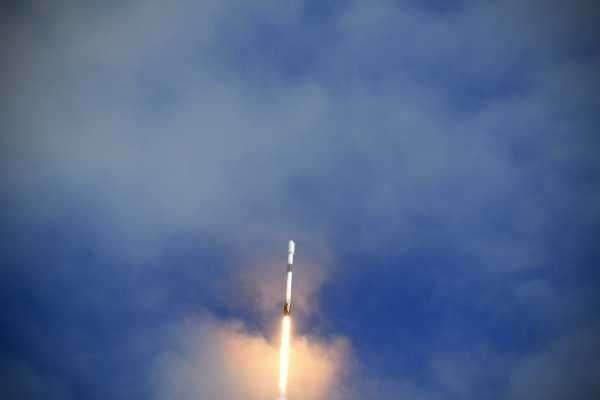
“We are aware from press articles that there have been some concerns raised about the effect of Starlink satellites on observations by astronomers at optical wavelengths,” Will Wiquist, an FCC spokesperson, says in an email. But also admits “this issue has not been raised in any FCC proceedings.”
Casey does some of her work in radio astronomy. That’s where scientists look at the night sky at frequencies our eyes can’t see. Radio astronomy has access to some protected wavelengths that communications companies are not allowed to infringe on. Though, as Casey points out, radio astronomers like to look at all sorts of wavelengths outside of that range. Overall, they’ll have to depend on the goodwill of companies like SpaceX to turn off their satellite transmitters when orbiting over a big radio observatory.
If the satellites aren’t turned off “the scenario is like trying to see a firefly in the vicinity of the sun. It would be incredibly bright,” she says. In the world of radio astronomy, a satellite beaming internet down to Earth might as well be a floodlight.
At least, though, for radio astronomy, there are established channels to voice their concerns over radio use.
But optical astronomy — which looks at the visible light of the universe — does not have international protections. “It doesn’t have a voice,” says Christopher Johnson, a space law adviser at the Secure World Foundation, a nonprofit that advocates for the sustainable and peaceful use of space.
The UN Outer Space Treaty — the world’s governing framework for the use of space — says nothing on the topic of the reflectivity of satellites, nor their impact on astronomy. Even if one country began strictly protecting the night sky from overcrowding, another could ignore those regulations entirely, and spoil the night sky for everyone, Johnson explains.
This is a problem “that falls in the cracks,” Mark Skinner, an astronomer associated with the International Institute of Space Law.
Without regulations, the future could get weird
Without stricter regulations, the future could get even weirder. People could launch bright satellites, to intentionally get the attention of people around the globe. And they already have: In January 2018, a New Zealand company launched a satellite called “humanity star.” It was basically a disco ball in low Earth orbit. Its creators hoped the light from the satellite would “create a shared experience for everyone on the planet.” Many astronomers were not delighted, likening it to “space graffitti.”
Perhaps the humanity star is just a precursor to even bigger and brighter displays in the night sky. There’s no explicit international ban, Wired reports, on advertising in space. There’s at least one company hoping to arrange satellites in the sky to get people to buy more soda. The night sky is enormous, and viewable to everyone on the planet. It’s the perfect billboard.
“There’s a huge driver for us to ring the alarm and try to bring some visibility to this now,” Johnson, of Northwestern, says. “This is just the tip of the iceberg.”
Maybe with some more visibility, astronomers can convince the nations of the world to make sure the night sky remains clear for telescopes. But the fear is, at the end of the day, commercial interests will win over scientific ones. SpaceX “might have good intentions, but they’re still a company, they’re still out to make money,” Johnson says.
The astronomers I spoke with for this story all see the merits of Starlink, and satellite constellations at large. Too much of the world is cut off from internet access. “Astronomers aren’t asking for there to be no Starlink, and for there to be no satellites,” Johnson says. “But to at least do it in a way that takes into account that other people want a night sky.”
The American Astronomical Society recently convened a working group to try to thread this needle. “The goal of Starlink is to provide worldwide internet service, an aspiration we do not want to impede,” working group astronomer Kelsie Krafton writes. “We do not want to give up access to optical observations from the ground.”
Then, there are impacts to changing the night sky that go beyond science or the internet. The night sky, when seen from dark places, represents the ultimate wilderness — a pristine view of nature that humans have barely touched. What does changing that mean?
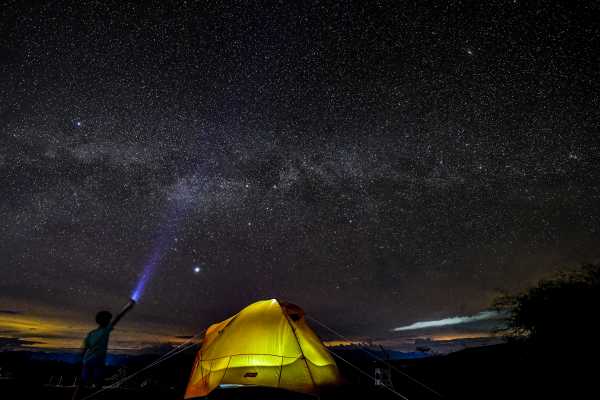
“Every culture throughout time has valued the night sky, and many peoples have enormously meaningful or practical traditions of naked-eye observation, woven right into their culture,” Kathryn Denning, an anthropologist at York University who studies the ethics of space exploration, writes in an email. Cultural heritage issues, she says, “is taken seriously at the United Nations level, but to my knowledge that hasn’t translated into international rules for visible satellites yet.” Even some animals use starlight for navigation, and it’s hard to know if constellation satellites will have an impact on them, too.
Casey, the UT Austin astronomer, wants the world to know that messing with the night sky removes “the one thing that all humans have had in the past 200,000 years, millions of years, it’s always been there.” That’s not something to be taken lightly.
“My whole attachment to science and pursuing this as a career dates back to seeing the night sky as a child and being mesmerized,” she says. “Astronomy is a unique science: we can’t tinker with things in a lab, experimenting on stars. The entire science is looking up at the sky, and losing that would be tragic.”
Sourse: vox.com






